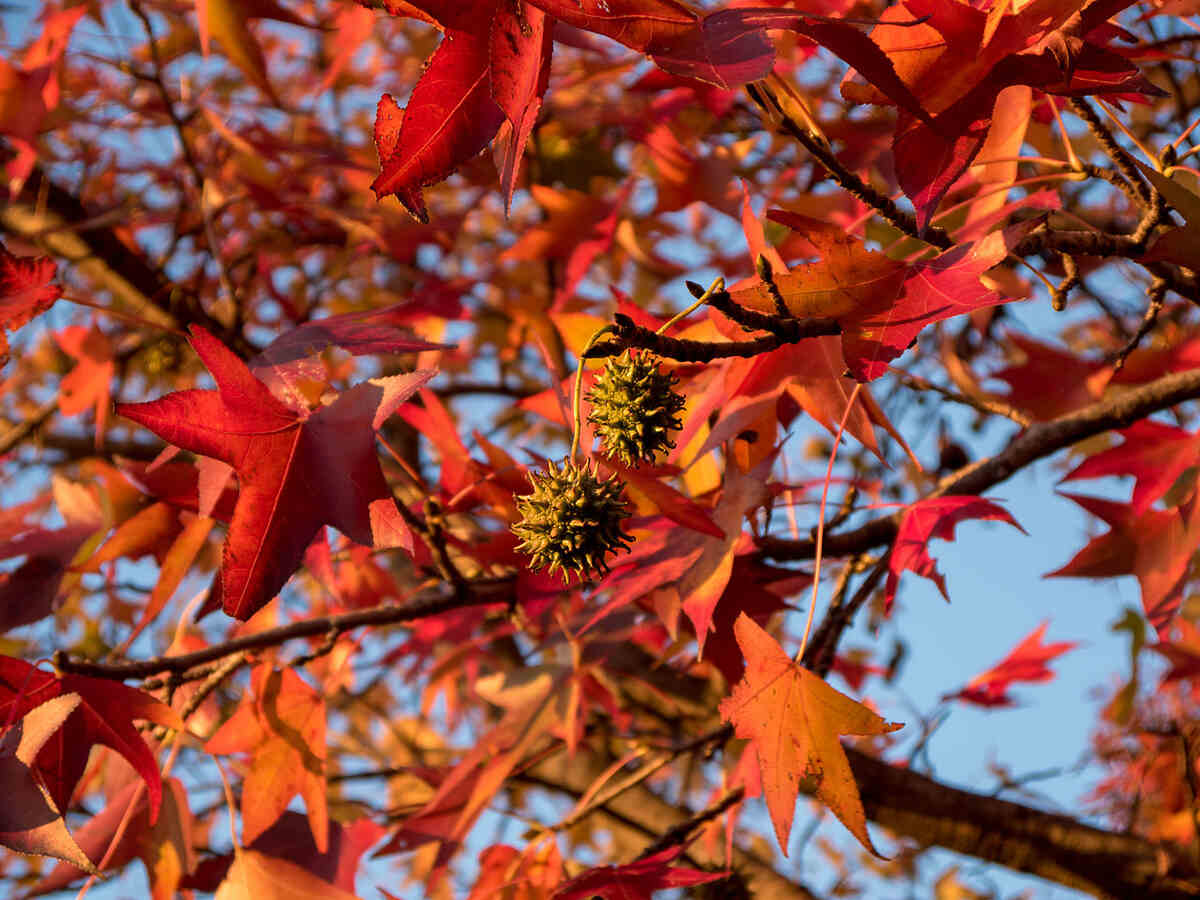
Looking for the best shade trees for your Tampa yard? Live oaks, sycamores, crape myrtles, bald cypress, and sweetgum trees are excellent options for the west central Florida climate.
In this hot weather, shade trees grow tall and rich in foliage, keeping your garden and home cool and energy bills low. They make a resilient wind barrier, sock up stormwater, and prevent runoff. Some also bloom delightful, unique flowers.
But to enjoy their benefits fully, you must know how to choose the right shade tree for your garden. Here are nine excellent shade trees to plant in your Tampa yard and the details you need to make an informed decision.
- 1. Southern Live Oak (Quercus virginiana)
- 2. Crape Myrtle (Lagerstroemia spp.)
- 3. Bald Cypress (Taxodium distichum)
- 4. Loblolly Pine (Pinus taeda)
- 5. Southern Magnolia (Magnolia grandiflora)
- 6. Sweetgum (Liquidambar styraciflua)
- 7. American Sycamore (Platanus occidentalis)
- 8. Florida Elm (Ulmus americana)
- 9. Trumpet tree (Tabebuia)
- Benefits of Shade Trees
- How To Choose The Best Shade Tree for Your Tampa Yard?
- How to Take Care of Shade Trees in Tampa Bay
- FAQ About Shade Trees for Tampa
- Plant the Best Shade Tree in Your Tampa Yard Today!
1. Southern Live Oak (Quercus virginiana)
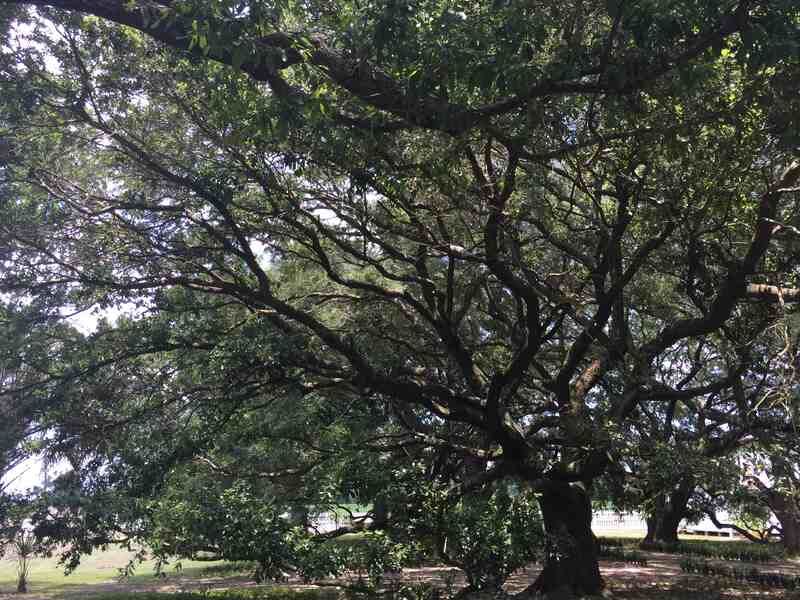
This magnificent tree can survive for centuries, giving precious shade and sheltering the house from hurricanes and storms. Live oaks have broad-spreading canopies with branches arching like strong, resilient arms.
The largest oaks can grow crowns up to 150 feet wide, almost big enough to cover half of the Raymond James football field. So, make sure your Tampa yard has enough space for such a giant before planting. Live oaks make magical playgrounds for children and great homes for wildlife.
- Size at maturity: This oak tree grows 60 to 100 feet tall and spreads 50 to 80 feet wide.
- Growth rate: Moderate grower (two to two and a half feet in height and one inch in trunk diameter each year).
- Lifespan: 60 to 75 years (250 to 500 years in good growing conditions).
- Soil and water requirements: Grows in dry, sandy, or clay loam soil. Tolerates drought and poor soils.
- Light requirements: Partial shade, full sun.
- USDA hardiness zone: Hardy in zones 6 to 8.
Pro tip: Plant at least 15 feet from the house and 10 feet from walkways and driveways to avoid root problems.
2. Crape Myrtle (Lagerstroemia spp.)
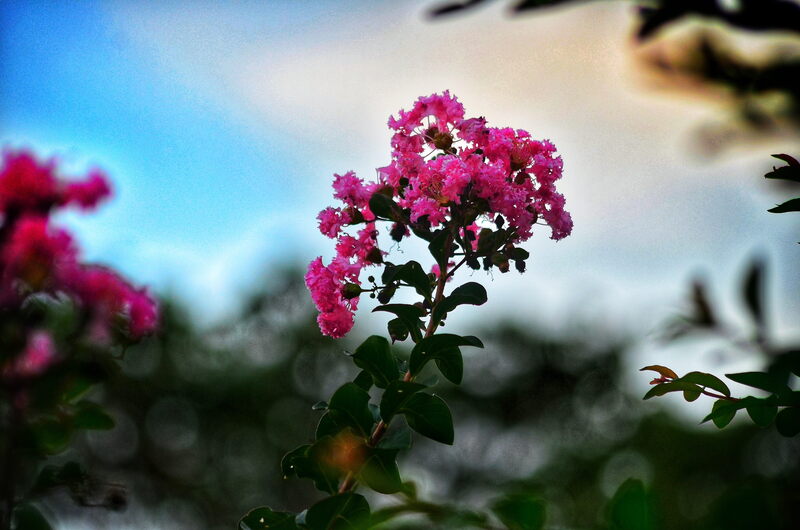
Tampanians call it the “lilac of the South” for its gorgeous, huge dropping blooms ranging from soft white, pink, and lavender to deep purple and red. Crape myrtles bloom from mid-May to June, adding beauty and blissful shade to the gardens in Cigar City.
Come fall, the foliage takes its turn in the color wheel, showing beautiful shades of yellow to orange and vibrant red. All leaves fall during winter, but crape myrtles still look amazing due to their ornamental, peeling bark. Winter is also the best time to prune crape myrtles to adjust their natural shape.
- Size at maturity: Grows 3 to 20 feet tall and 6 to 15 feet wide.
- Growth rate: Fast (more than 2 feet a year)
- Lifespan: 25 to 100 years.
- Soil and water requirements: Grows in moist, well-drained soil, slightly alkaline to acidic. Tolerates sandy or clay soils.
- Light requirements: It needs full sun for at least six hours daily.
- USDA hardiness zone: Adapted to zones 7 to 10.
3. Bald Cypress (Taxodium distichum)
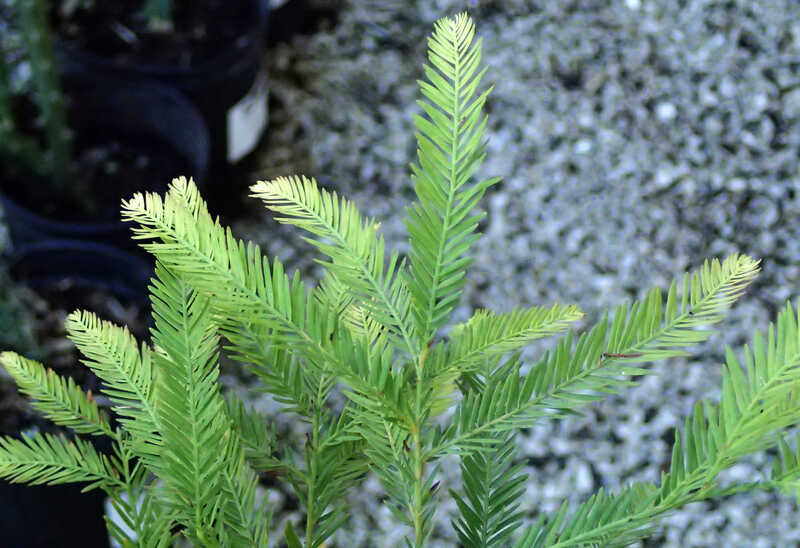
Consider planting bald cypress if your Tampa property is exposed to flooding. Native to southern swamps and rivers, the bald cypress is ideal for wet locations but also grows remarkably well in drier areas.
Its canopy is pyramidal with feathery foliage, turning a beautiful orange-cinnamon color during fall. In some yards, you’ll see it draped in soft Spanish moss.
- Size at maturity: Grows 50 to 70 feet tall and around 25 feet wide.
- Growth rate: Medium grower, between 1 and 2 feet per year.
- Lifespan: Around 600 years.
- Soil and water requirements: Bald cypress grows in acidic soil, loamy, sandy, or clay. It adapts well to wet and dry conditions.
- Light requirements: Full sun.
- USDA hardiness zone: Bald cypress grows in zones 4 to 10.
4. Loblolly Pine (Pinus taeda)
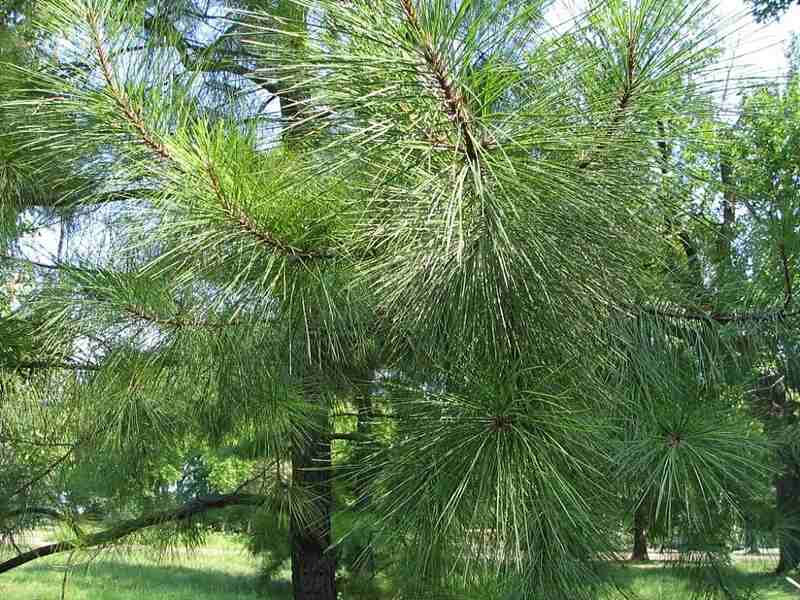
Planting loblolly pines is one of the best ways to get light shade in your yard. When young, loblolly pine’s canopy is pyramidal. Grown in a row, these trees create an excellent sound barrier and privacy screen.
While growing, this conifer loses its lower branches. The clean trunk base makes a place for some beautiful plants under its crown, such as gardenias, azaleas, holly, ferns, and cranberry viburnum. It’s not a showy tree, but it’s a good windbreak and keeps its beautiful green all year round.
Size at maturity: Grows 50 to 80 feet tall and 35 feet wide.
Growth rate: Fast grower, more than 2 feet a year.
Lifespan: Loblolly pines live up to 200 years.
Soil and water requirements: Grows well in acidic soil; clay, sandy, or loamy, occasionally wet to well-drained.
Light requirements: Plant it where it enjoys full sun exposure.
USDA hardiness zone: It’s hardy to zones 6B through 9B.
5. Southern Magnolia (Magnolia grandiflora)
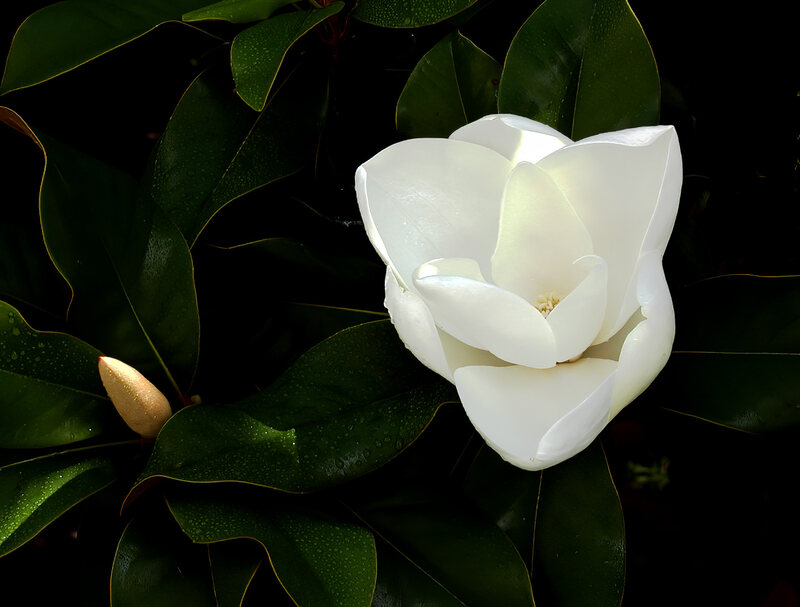
Queen among the flowering trees in South Florida, the Magnolia tree is a unique combination of beauty and shade. It has large, glossy deep-green leaves and fragrant, white, creamy cup-shaped flowers that bloom mid to late summer in the Tampa Bay area.
This unique ornamental tree fits perfectly in any Tampa yard, from the luxurious Davis Island properties surrounded by palm trees to the classic South Tampa neighborhood. Its robust roots also make it a good choice for hurricane-resistant landscape designs.
Pro tip: Give it plenty of water in the first years to establish a deep root system.
- Size at maturity: Grows up to 80 feet tall and 50 feet wide. Consider dwarfed cultivars like Little Gem (up to 25-30 feet tall) for a small yard.
- Growth rate: Slow to medium (less than 1 foot to 2 feet a year).
- Lifespan: 80 to 120 years.
- Soil and water requirements: Thrives in moist, well-drained, acidic to slightly alkaline soils. Tolerates wet/dry fluctuations.
- Light requirements: Sun or shade.
- USDA hardiness zone: Adapted to zones 6 to 10.
6. Sweetgum (Liquidambar styraciflua)
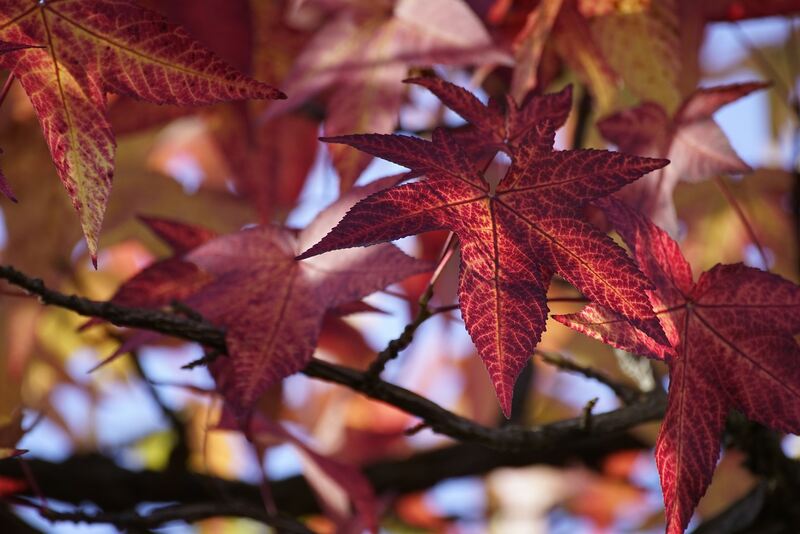
In parks and gardens around the Lightning Capital of the World, sweetgum’s autumn foliage is another thing that shines brightly. It spreads a catchy canopy of yellow to deep red star-shaped leaves that fits perfectly as a background in classy Halloween pictures.
On the other hand, it’s a deciduous tree. Its fall colors and spiky ball fruits cover the ground in late autumn, making leaf raking a priority in your fall lawn care schedule.
- Size at maturity: Grows 80 to 100 feet tall and 30 to 50 feet wide.
- Growth rate: Moderate to fast grower, 2 to 3 feet per year, slower on dry soil
- Lifespan: Up to 400 years old.
- Soil and water requirements: It prefers moist, rich, acid soils and has moderate drought tolerance.
- Light requirements: Full exposure to morning light with some protection from the intense afternoon sun.
- USDA hardiness zone: Hardy to zones 6 to 8.
7. American Sycamore (Platanus occidentalis)
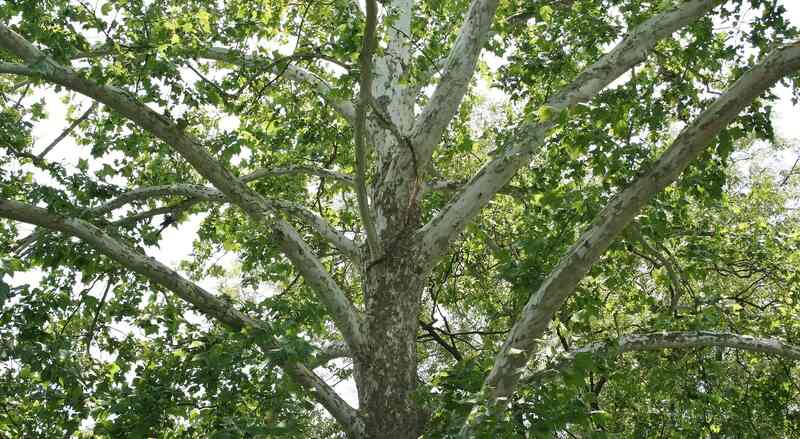
This magnificent giant is a generational tree. Living up to 300 years, it grows fast, tall, and robust, covering the yards and streets in a vast, protective shade. Sycamore’s massive crown turns yellow and loses its leaves in the fall to allow more winter sunlight into your garden.
Its bark is exquisite and showier than its foliage. Thin and flaky at the base, it turns greenish-white as you look further up and bone-white at the top. The mature sycamore has a massive trunk and occupies a lot of space, so make sure you have enough room before bringing this green titan into your Tampa yard. Tree removal is complicated and costly.
- Size at maturity: Sycamores grow to 100 feet tall and up to 70 feet wide.
- Growth rate: Moderate to fast grower, with an average annual growth rate of 2 to 3 feet.
- Lifespan: It’s a secular tree. Depending on growing conditions, a sycamore can live 200 to 300 years.
- Soil and water requirements: Champion of floodplain lands, the sycamore tree thrives in moist, well-drained soils.
- Light requirements: Prefers full sun and partial shade.
- USDA hardiness zone: It’s hardy to zones 4 to 10.
8. Florida Elm (Ulmus americana)
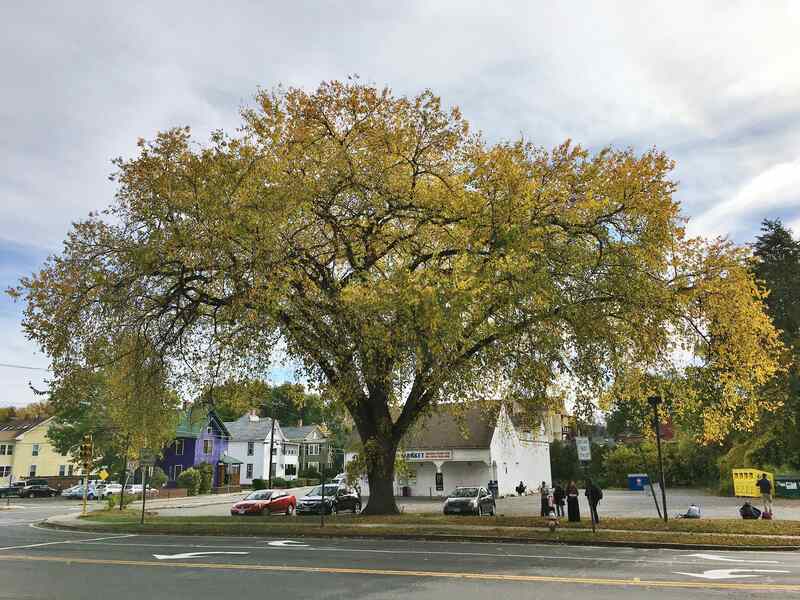
If you’re looking into fast-growing shade trees for your yard, put the Florida elm on your list. It’s a tall tree with a dense, vase-shaped crown that turns bright yellow in the fall. A typical native tree in the Tampa Bay area, the Florida elm offers great shade and grows into a beautiful centerpiece.
It has light green flowers that bloom in early spring. They are not showy but carry allergenic pollen, something to consider with pollen allergies in your family. Also, since elms are susceptible to breakage during hurricanes and intense storms, it’s better to plant them in more inland neighborhoods like Lakewood Ranch.
Size at maturity: The Florida elm grows 60 to 80 feet tall and 50 to 60 feet wide.
Growth rate: It’s a moderate grower with 1 to 2 feet per year.
Lifespan: Florida elms can live 50 to 75 years in the right growing conditions.
Soil and water requirements: The Florida elm prefers well-drained, fertile soils but can tolerate clay and sand. It has moderate water requirements and tolerates some drought once established.
Light requirements: It prefers full sun to partial shade.
USDA hardiness: The Florida elm is hardy to zones 8 to 10.
Pro tip: Florida elms are vulnerable to Dutch Elm disease. Get in touch with a local tree care company to apply preventive treatments.
9. Trumpet tree (Tabebuia)
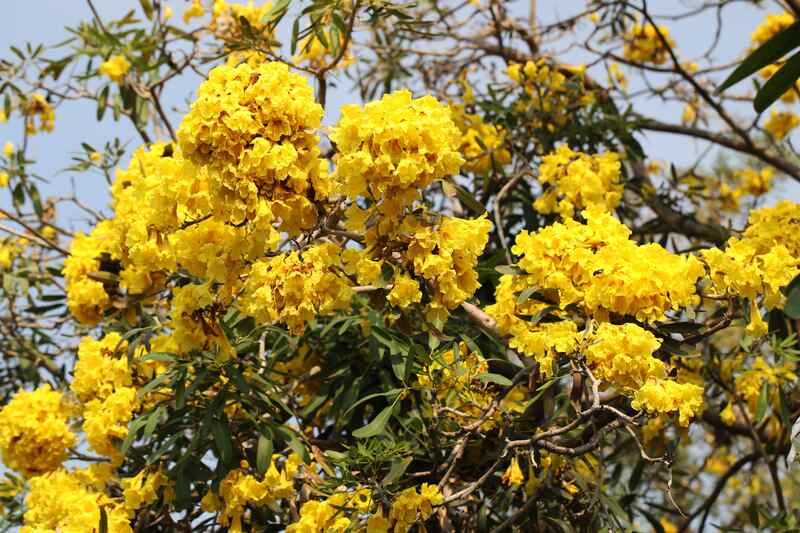
Tabebuia is one of the best shade trees for the Big Guava’s patios and decks and a colorful addition to Florida landscapes. In early spring, this highly ornamental tree turns into a mass of vibrant pink, lavender, and golden-yellow flowers.
It is a small tree compared with sycamores and elms but creates impressive arches if planted on both sides of a walkway. The trumpet tree also gives ample shade during the summertime. You can underplant with companions that can handle its shade in summer, such as:
- Foxtail fern
- Dwarf podocarpus
- Purple queen
- Liriope
Size at maturity: Tabebuia grows 20 to 50 feet tall and 20 to 30 feet wide, depending on the variety.
Growth rate: Moderate to fast grower, gaining 2 to 3 feet yearly.
Lifespan: It typically lives 50 to 100 years.
Soil and water requirements: Tabebuia prefers well-drained, acidic soil but can tolerate a range of soil types. Needs moderate watering.
Light requirements: Thrives in full sun and partial shade.
USDA hardiness zone: This shade tree is hardy to USDA zones 9 to 11.
Pro tip: Tabebuia thrives with a regular irrigation schedule and should be fertilized in spring, summer, and autumn.
Benefits of Shade Trees
Growing a shade tree in your Tampa yard has significant benefits. Here are the main advantages to consider if you’re still hesitating to plant one:
- Blissful shade. These trees have large and dense canopies that shade your house, decreasing energy bills during the hot and muggy Tampa summer.
- Wind barrier. Tree foliage slows down air currents, protecting your garden and home from strong winds.
- Soak up stormwater. Shade trees slow down rainfall, and their roots soak up water during tropical storms, reducing runoff and flooding.
- Habitat for wildlife. With generous crowns and large trunks, shade trees like sycamore, elms, and oaks give shelter and food to insects, birds, and squirrels. Their flowers attract bees, butterflies, and other precious pollinators.
- Adding curb appeal. Beautiful, healthy shade trees typically make a house more attractive for buyers.
- Increasing home value. Planting shade trees in the hot Tampa Bay climate is a sure way to increase property value.
How To Choose The Best Shade Tree for Your Tampa Yard?
Planting a shade tree in your wonderful Big Guava city is a long-term investment, and you must get it right. Here are five steps to help you choose the right tree for your outdoor space.
1. Check for the Approved Shade Trees in the Tampa Bay Area
Hillsborough County has published a detailed list here. Use it to find out if your desired tree is among the approved species.
2. Estimate the Available Space in Your Yard
To ensure you won’t have to dig out the tree before enjoying its full benefits, check if you have enough space in your yard for the following:
- Root system
- Canopy spread
- Mature height
Space for roots. According to a study published by the University of Florida, a safe way to go is to leave a minimum space around the tree equal to half the maximum trunk diameter at maturity plus four feet (buffer distance). This protects walkways, driveways, patios, the house’s foundation, and streets from root damage.
Space for tree crown. Also, consider the full canopy spread at maturity. This way, you won’t need to trim the tree extensively to fit between the house and other constructions or trees.
Space for growth in height. Avoid planting very tall trees under electrical lines.
3. Consider Debris and Lawn Maintenance
Some trees make more mess than others. Choose evergreen trees if raking fallen leaves is not something you want to deal with, and slow growers if you’re not a big fan of trimming and pruning. Remember that before pruning a tree in the city right-of-way, you must obtain permission from the City of Tampa Parks Department Forestry Division.
4. Decide on Shape, Fall Colors, and Flowers
Since most shade trees will live for decades, ensure you choose the right one to complement your garden’s landscape. Look for a talented landscape designer or arborist in Tampa Bay if you need help with your planting ideas.
5. With or Without Surface Roots?
Some shade trees grow massive, robust roots above the ground. If you love the texture and image, go for it. If you prefer to cover the soil with beautiful ferns or wildflowers, look for trees that leave the ground free under their canopy.
How to Take Care of Shade Trees in Tampa Bay
To enjoy beautiful, healthy, dense shade trees:
- Ensure you know how to plant the tree correctly (how deep, with or without fertilizer or soil amendments).
- Water the tree until it’s well established. This varies with the type of tree.
- Prune and trim periodically or find a tree service company in Tampa Bay to do it.
- There’s a reason Tampa is also known as the Lightning Capital of the World. Lightning strikes often and can damage trees but won’t always kill them. Call an expert to check any tree hit by lightning before deciding what to do next.
- Have an arborist consult your older trees periodically for rot and diseases. High winds are frequent in the Tampa Bay area, and you must ensure no zombie trees in your yard can fall over the house or car.
FAQ About Shade Trees for Tampa
Not exactly. The loquat is a beautiful, low-maintenance fruit tree you can grow in your Tampa garden. It blooms from October to February with beautiful white flowers and produces yellow-orange skinned fruits in early spring. Loquat fruits are sweet and spicy, resembling pineapple and citrus fruit. Since they are pretty small and usually pruned, they are not considered great shade trees.
If you want to plant a shade tree close to the house, consider paper birch, tulip poplar, silver maple, American sweetgum, and weeping willows.
Assuming you have the space to allow its extensive crown to grow, sycamore is certainly a VIP among your garden’s best and fastest-growing shade trees. You can also choose a sweetgum tree or a river birch.
Plant the Best Shade Tree in Your Tampa Yard Today!
Southern live oaks, Magnolia trees, bald cypress, and loblolly pine are amazing native trees you can plant for great shade and to add amazing colors to your Tampa garden.
But to enjoy their benefits fully, you need to choose right. Digging out a tree after a few years is costly and drastically interferes with landscaping plans. Find a trustworthy Tampa landscaper, for help planting the best shade tree in your yard today!
Main Image Credit: Sweetgum / Ontologicalpuppy / Wikimedia Commons / CC BY-SA 4.0